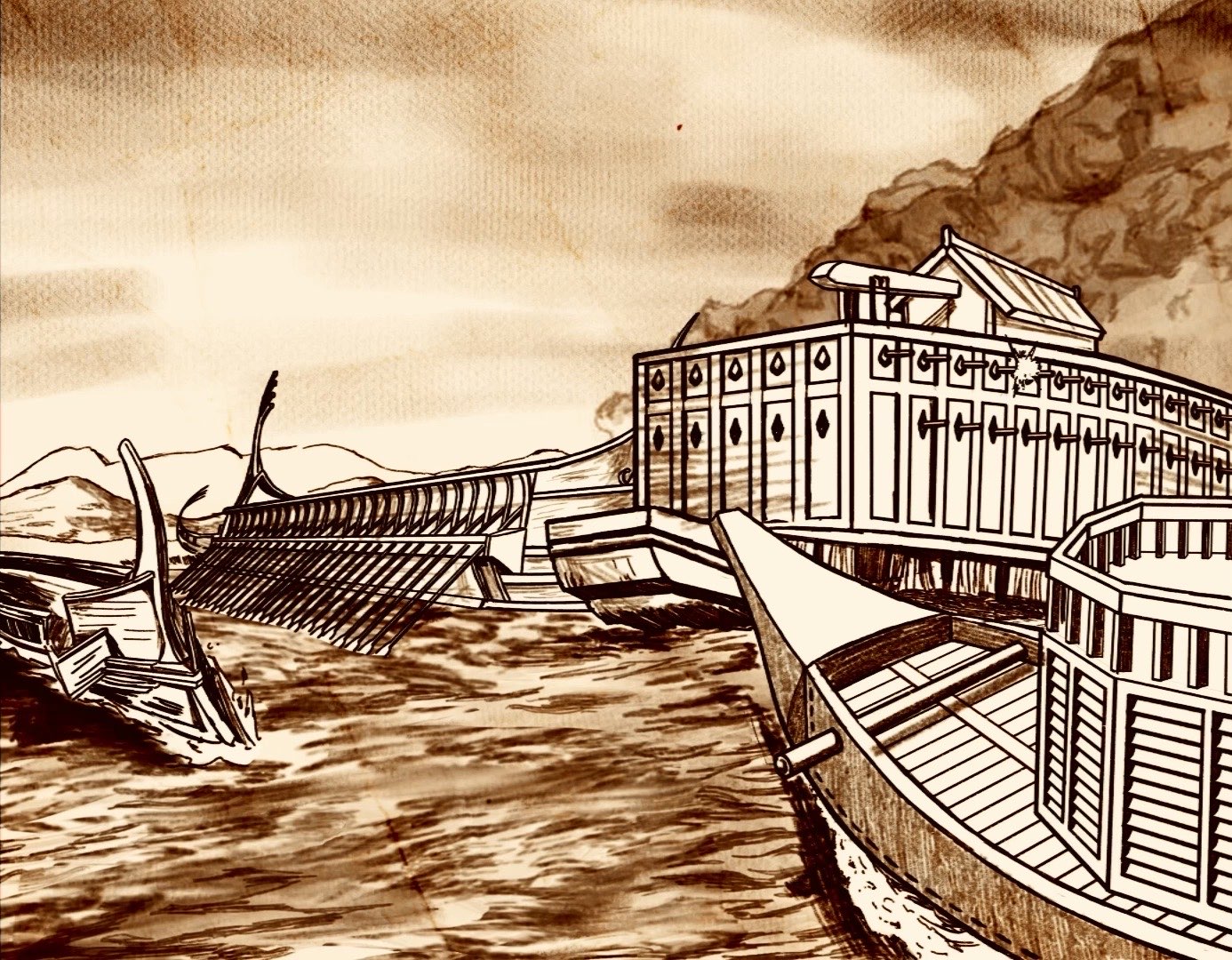Slintans
Originating from precursor tribes, the Slintans are known for their wealthy kingdoms that lines the western coasts of Severon. Slintans tend to excel in both their harmony with nature and medicine, as well as seafaring exploits and strategy.
Home Region: Subcontinent of Hersinos
Origin: Organized chiefdoms in 1000 BR
Presence: Resurgence
Common Religion: Gods of the Archipelago, Makan Pantheon, Western Gate Pantheon, Rhalan Pantheon
Real World Influence: the Indo-Hellenic Kingdom, Khmer, Phoenician
5e Additions:
Magic Proficiency: Air/Arcane Evocation
Non-Magic Proficiency: Medicine
History
The Slintan people, occupying the west of Severon, are said to be descended from Aetian sailors and settlers. While the Aetians certainly sailed in early ages, it is doubtful that any Aetians sailed as far as the Western gateway before biremes and triremes were invented in the 400s and 300s BR. It is, however, hard to deny the similarities in the cultures. Their languages share some similar words and conjugations, but are otherwise of mutually unintelligible. Moreover, Slintan column-making appears more inspired and linked to other neighboring nations.
Minor Wars
The Slintan people take their name from the prominent state - Slint - which dominated over most of the regions occupied by the culture by 300 BR. In 100 AR Slint unified the major cities of Hersinos under a single kingdom after the defeat of Pemalian tribal confederation to the east. The conclusion of the war against Pemalia resulted in the Treaty of Kings, deeming the rightful sovereign of Slint, Avolita, and Tyros by extension. There was fallout among the populace as the people experienced kings for their first time - though in truth only a little different from leading chiefs. Slintan King Laskis in the 130s AR appealed to the people and promised a return to normalcy for their support in his rightful reign of Avolita land. Surprisingly this worked, and Avolita was annexed by 150 AR. In return, the rights and responsibilities of a Slintan King were legally limited.
The Makan Empire
In the 180s AR, Slint encountered the rising Mako Empire. The Mako had fashioned their own unique type of ships which at first resembled squares sitting on the water. They were used primarily for boarding purposes, but they proved ineffective against the Slintan warships, long and keen on ramming. For 30 years, countless Makan invasions were repelled, and forced their focus to shift of Tyros, who proved less effective at resisting their attacks. In 240 AR the Mako were finally successful in making sufficient landfall on Hersinos, and so began a series of Slinto-Makan wars. By 280 the Hersinos peninsula was lost, and by 300 AR Slint was fully annexed by Mako. For the next 500 years, the Slintan people would live under The Makan Empire's rule. The Mako were harsh and intolerant at first, and as such incurred several rebellions. However these rebellions all failed, and only temporarily slowed Makan expansion to other regions. In time, the Makan mood towards Slintan people softened, and their lordship over Hersinos became generous, and even sacred.
Recent History
By the 800s AR, Mako lost its grip of its domains and several Slintan-cultured states declared their independence. As a result, the Slintan people saw a brief resurgence as they threw off the yoke of an oppressive and occupying force after nearly 500 years.
Traditions
The Ancient Slintan people engaged in many rituals with regard to their religion - The Gods of the Archipelago. Animal sacrifices, festivals, and ceremonies (on both land and water) were commonplace. The art of ship-building is highly regarded and held second to only the Salkans in its prestige in Slintan culture. As such, the Slintans dominated the seas, even while within the Makan Empire. Even after the annexation of Slintan kingdoms into the Makan Empire, their shipbuilding practices remained a secret for another century. Even then, Makan replication of the craft and technique could not compare to a native Slintan. The Slint people also traded extensively with the twin cities of Cytos and Knoros. Many Slintan ports kept exclusive deals with the Knori and became valued for procuring premium goods. The merchants of Cytos and Knoros formed a close bond with the people of Slint, and trade became among the chief concerns of successive Slint kings and queens.
Mythos
The people of Slint, comprised of elves and some humans, took a different approach to seafaring. Whereas most seafaring communities discovered and nurtured their own type of water evocation, the Slintans attuned with the air and can billow their sails to speed their ships, regardless of the waves or weather. What began as small communities of air evokers turned the majority of Slintan magical culture into revolving around mastery of air magics. While used primarily at sea, Slint air evocations also see combative use in the Treshin Mountains against the monsters and giants that dwell within.
Naming Traditions
Slintan names simply follow [First Name] [Family Name]. Nobility will often be known by only their first name, and their prestige is determined by how little their Family name is used. Common examples:
Male: Hiram Bastanes, Jabir Salmedes, Zimri Kalabesh, Baalis Enkatar, Croesus Ilian, Tigranes Hasparin, Tyre Myrun, Zurghas, Sothis,
Female: Astaris Belthani, Liraya Basmatos, Zemina Arivash, Saphira Kelshanis, Skylari




Comments